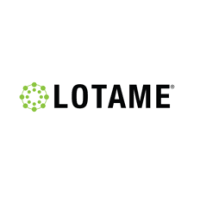By Sebastian Yoffe, Managing Director – Latin America, Lotame

Data is one of the most valuable resources businesses have. The more information you have about your customers, the better you can understand their interests, wants and needs. This enhanced understanding helps you meet and exceed your customers’ expectations and allows you to create messaging and products that appeal to them.
How do you collect this data? One of the most crucial tools for collecting — as well as organizing, analyzing and activating data — is the data management platform, or DMP. Your DMP can help facilitate all these steps and provide you with the tools you need to make the most of your data. There are various data-gathering methods you can use with the help of your DMP. We’ll explore some of the most common data collection methods below.
Primary Data Collection
The term “primary data” refers to data you collect yourself. Primary data is information obtained directly from the source. You will be the first party to use this exact set of data.
When it comes to data businesses collect about their customers, primary data is also typically first-party data. First-party data could include data you gathered from online properties and apps, data in your customer relationship management system (CRM), email marketing campaigns, offline data you collect from your customers through surveys and various other sources.
Because first-party data comes directly from your audience, you can have high confidence in its accuracy, as well as its relevance to your business. However, first-party data presents a narrow view of customers within the boundaries of a particular website or app.
Because first-party data comes directly from your audience, you can have high confidence in its accuracy, as well as its relevance to your business. However, first-party data presents a narrow view of customers within the boundaries of a particular website or app. To meet the needs of marketers who require a panoramic view of customers, you will need to enrich your first-party data with other types of data.
Second-party data has many of the same positive attributes as first-party data. It comes directly from the source, so you can be confident in its accuracy, but it also gives you insights you couldn’t get with your first-party data. Third-party data offers much more scale than any other type of data, which is its primary benefit. But third-party data can also fill in the gaps of knowledge about customer passions, interests, and behaviors.
hird-party data offers much more scale than any other type of data, which is its primary benefit.
Quantitative vs. Qualitative Data
You can divide primary data into two categories: quantitative and qualitative.
 Quantitative data comes in the form of numbers, quantities and values. It describes things in concrete and easily measurable terms. Examples include the number of customers who bought a given product, the star rating a customer gave a product and the amount of time a visitor spent on your website.
Quantitative data comes in the form of numbers, quantities and values. It describes things in concrete and easily measurable terms. Examples include the number of customers who bought a given product, the star rating a customer gave a product and the amount of time a visitor spent on your website.
Quantitative data lends itself well to analytics. When you analyze quantitative data, you may uncover insights that can help you better understand your audience. Because this kind of data deals with numbers, it is very objective and has a reputation for reliability.
Qualitative data is descriptive, by contrast. It is less concrete and less easily measurable than quantitative data. This data may contain descriptive phrases and opinions. Examples include an online review a customer writes about a product, an answer to an open-ended survey question about what type of videos a customer likes to watch online and the conversation a customer had with a customer service representative.
Qualitative data helps explain the “why” behind the information quantitative data reveals. For this reason, it is useful for supplementing quantitative data, which will form the foundation of your data strategy.
5-Step Process to Collect Data
There are many techniques for collecting different types of quantitative data, but there’s a fundamental process you’ll typically follow, which consists of the following five steps.
1. Determine What Information You Want to Collect
First, choose what details you want to collect. Decide what topics the information will cover, who you want to collect it from and how much data you need. You may want to collect data about which type of articles are most popular on your website among visitors 18–34 years old. You might also choose to gather information about the average age of all of the customers who bought a product from your company within the last month.
2. Set a Timeframe for Data Collection
Next, you can start planning how you’ll collect your data and establish a timeframe for data collection. You may want to gather some types of data continuously. When it comes to transactional data and website visitor data, for example, you may want to set up a method for tracking that data over the long term. If you’re tracking data for a specific campaign, however, you’ll track it over a defined period. In these instances, you’ll have a schedule for when you’ll start and end your data collection.
3. Determine Your Data Collection Method
At this step, you will choose the data collection method that will make up the core of your data-gathering strategy. Consider the type of information you want to collect, the timeframe over which you’ll obtain it and other aspects you determined.
4. Collect the Data
Once you have finalized your plan, you can implement your data collection strategy and start collecting data. You can store and organize your data in your DMP. Be sure to stick to your plan and check on its progress regularly. It may be useful to create a schedule for when you will check in with how your data collection is proceeding, especially if you are collecting data continuously. Update your plan as conditions change and you get new information.
5. Analyze the Data and Implement Your Findings
Once you’ve collected all your data, it’s time to analyze it and organize your findings. The analysis phase is crucial because it turns raw data into valuable insights that you can use to enhance your marketing strategies, products and business decisions. Once you’ve uncovered the patterns and insights in your data, you can implement the findings to improve your business.
There are various methods of collecting primary, quantitative data. The right one to use depends on your goals and the type of data you’re collecting. Some of the most common types of data collection used today are: surveys, online tracking (e.g., your website or mobile app), transaction data tracking (e.g., ecommerce, in-store point-of-sale system), online marketing analytics, social media monitoring, collecting subscriptions and registration data (e.g., your email list, rewards program), and in-store traffic monitoring.
There are various methods of collecting primary, quantitative data. The right one to use depends on your goals and the type of data you’re collecting
The more relevant, high-quality data you have, the more likely you are to make good choices when it comes to marketing, sales, customer service, product development and many other areas of your business. Some specific uses of customer data include the following: improving your understanding of your audience, identifying areas for improvement, predicting future patterns, and better personalizing your content and messaging.
How are you collecting your data today? Are you using data to drive your business and connect with customers? I would love to learn about your data strategy; please send me a note directly: [email protected]







